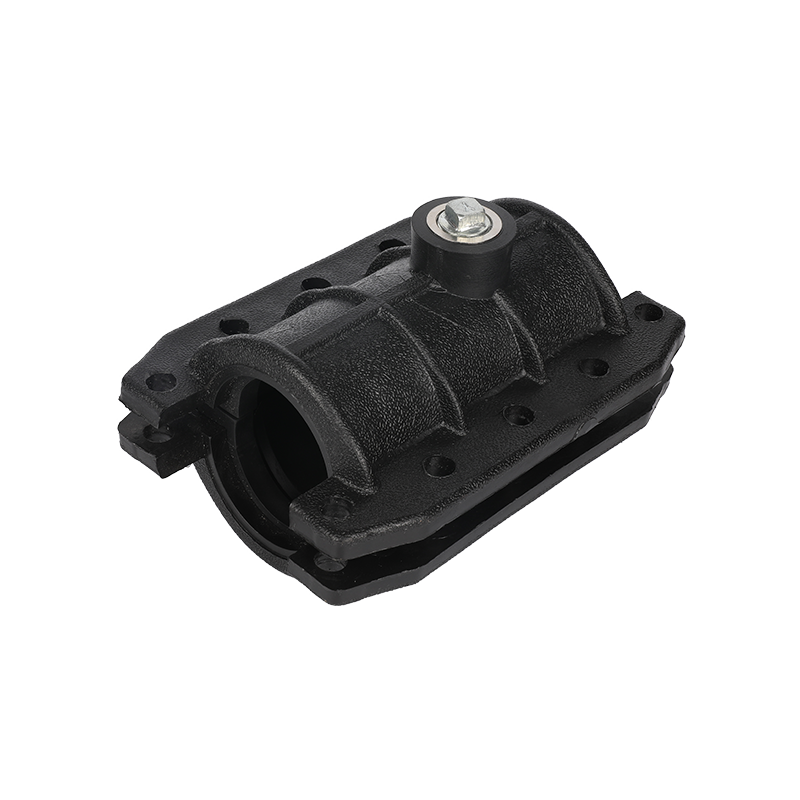HDPE 90 graders albuestussfusjonsfitting produs......
-

AdresseZheJiang, Kina
-

Telefon+86-15551203813
-

E-post[email protected]
Is the Hdpe Repair Clamp resistant to high or low temperatures?
Whether the HDPE Repair Clamp has high or low temperature resistance depends on its material characteristics and specific design and application scenarios. The following is a detailed analysis of its high and low temperature resistance:
Basic thermal properties of HDPE material
High-density polyethylene (HDPE) is a thermoplastic with the following thermal properties:
High temperature resistance: The softening temperature of HDPE is usually around 120°C to 135°C. This means that below this temperature range, HDPE can maintain good physical properties and structural stability. However, when the temperature exceeds the softening point, HDPE may deform or even lose strength.
Low temperature resistance: HDPE performs well in low temperature environments, and its brittle temperature is usually around -80°C to -100°C. This means that even at extremely low temperatures, HDPE can still maintain a certain degree of flexibility and impact resistance.
Therefore, the HDPE Repair Clamp can be used in a wide temperature range and is suitable for pipeline repairs under most conventional environmental conditions.
Temperature resistance range in practical applications
In actual projects, the temperature resistance of HDPE Repair Clamp needs to be evaluated according to the specific application scenarios:
High temperature environment:
If used for pipeline repair for conveying hot water or steam, HDPE Repair Clamp may not be able to directly withstand high temperatures exceeding 120°C. In this case, it is usually necessary to combine other materials (such as metal reinforcements or high-temperature resistant sealants) to enhance its heat resistance.
In some special scenarios (such as oil pipelines or industrial pipelines), if the temperature exceeds the tolerance range of HDPE, it is not suitable to use HDPE repair clamps alone, and more high-temperature resistant materials (such as stainless steel or fiberglass composites) should be selected.
Low temperature environment:

HDPE Repair Clamp is very suitable for pipeline repair in cold areas, such as northern winter or polar environments. Even under low temperature conditions, HDPE can still maintain good flexibility and will not crack or fail due to freezing.
For buried pipeline repair, HDPE Repair Clamp is particularly suitable because it can resist low temperature changes in the soil and is not easily affected by frost heave.
Factors affecting temperature resistance
In addition to the material itself, the following factors will also affect the temperature resistance of HDPE Repair Clamp:
Clamp design: Some HDPE Repair Clamps may be specially designed or modified to improve their temperature resistance. For example, adding fillers or reinforcing agents can improve their thermal stability and mechanical properties.
Installation method: The correct installation method helps ensure the stability of the repair clamp under extreme temperatures. For example, using suitable sealants or reinforcing tapes can enhance its temperature resistance.
External protection: In high or low temperature environments, additional protective layers (such as insulation materials or thermal insulation coatings) can be added to the HDPE Repair Clamp to extend its service life.
Actual cases and scope of application
Water supply pipeline: HDPE Repair Clamp is widely used in pipe repair of urban water supply systems and can be used for a long time in the normal temperature range (0°C to 40°C).
Drainage pipeline: For sewage or rainwater pipe repair, HDPE Repair Clamp is also competent because these pipes usually do not involve extreme temperatures.
Oil and gas pipelines: Although HDPE Repair Clamp can be used for low-temperature repair of some oil pipelines, it is recommended to be used in combination with other materials under high temperature and high pressure conditions.
Underground pipelines: Since the underground ambient temperature is relatively stable, HDPE Repair Clamp is an ideal repair solution.
HDPE Repair Clamp has good low-temperature resistance and can maintain flexibility and stability in low-temperature environments of -80°C to -100°C. However, its high-temperature resistance is limited and can usually only withstand temperatures below 120°C. If it needs to be used at higher temperatures, it is recommended to combine it with other high-temperature resistant materials or take additional protective measures.
Therefore, when selecting HDPE Repair Clamp, be sure to evaluate it based on the temperature conditions of the actual working environment and ensure that it meets the specific application requirements.
Produkt Vise
-

HDPE 90 graders albuestuss fusjonsbeslag
-

HDPE 45 graders albue butt fusion fitting
HDPE 45 grader albue butt fusjonsfitting produs......
-

HDPE 22,5 graders albuestuss fusjonsbeslag
HDPE 22,5 graders albuestussfusjonsfitting prod......
-

HDPE like tee butt fusion fittings
HDPE like tee butt fusjonsfittings produsert av......
-

HDPE-reduserende tee butt fusion fitting
HDPE reduserende tee butt fusion fittings produ......
-

HDPE flensadapter butt fusion fittings
HDPE-flensadapter-stussfusjonsfittings produser......
-

HDPE-reduksjonsstussfusjonsfitting
HDPE-reduksjons-stussfusjonsfitting produsert a......
-

HDPE kryssstøtfusjonsbeslag
HDPE kryssstøtfusjonsfittings produsert av sprø......
-

HDPE endehette butt fusion fitting
Forminjeksjons-hdpe-endestykker med buttfusjons......
-

PE/PPR socket fuison sveisemaskin
PE/PPR socket fusion sveisemaskin brief og funksj......
-

Dobbel U HDPE jordkildepumpearmatur
Dobbel U HDPE Jordkildepumpearmatur produsert a......
-

RØRklemme HDPE jordkildepumpekobling
RØRKLEMME HDPE Jordkildepumpetilbehør produsert......
-
.jpg?imageView2/2/format/jp2)
Enkel U HDPE jordkildepumpearmatur
enkelt U HDPE Jordkildepumpetilbehør produsert ......
-

U-sokkel HDPE Jordkildepumpekobling
U-sokkel HDPE Jordkildepumpetilbehør produsert ......




Kontakt oss